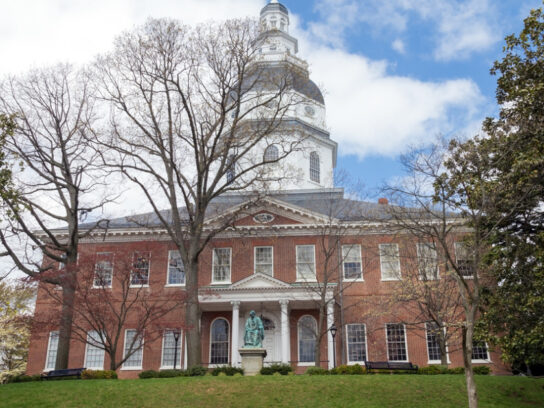
Ahead of the Maryland General Assembly’s meeting in January, analysts say a widening budget deficit may be the worst fiscal situation the state has faced in two decades.
According to a five-year projection, the budget gap will increase between state spending commitments and incoming revenue.
“Our fiscal 2025 forecast…has us short about $300 million,” said David Romans, a fiscal budget analyst.
According to reports from the Department of Legislative Services, during the 2008 and 2009 recession, projections showed that the state only had enough revenue to cover 89% and 87% respectively. During COVID, initial projections indicated that the state could only cover 85-88% of revenues. However, unexpected economic rebounds accompanied by federal aid mitigated this.
“By fiscal 2030 – the final year of our forecast – we are showing the state will only have enough revenue to cover 84% of the expenses we’re projecting the state to incur,” said Romans.
Within two years, Maryland will see a $2.7 billion deficit if nothing changes. Currently, the state faces a $1 billion gap in both structural and cash deficits.
While unemployment remains low at 2.9%, economic growth has stagnated. According to analysts, this has contributed to the slower growth in revenue.
Incoming policy changes and infrastructure reforms will only increase state spending, further widening the deficit.
According to Kevin Kinnally, the Legislative Director for the Maryland Association of Counties, the main spending pressure the budget faces in future years is The Blueprint for Maryland’s Future, a landmark law passed in 2020 implementing a decade-long plan to invest in education reforms. This comprises of universal preschool, increased funding for schools in low-income areas and increasing wages for teachers.
By 2028, the set-aside funds for these reforms will run out.
Increased pressure on the Governor’s office and state legislature:
Earlier this year, a budget conflict between the state House and Senate foreshadowed difficulties in addressing deficit concerns.
While the House wanted to secure more funding for infrastructure reforms, the Senate refused to budge on any broad tax increases. Gov. Wes Moore shared this sentiment.
The result was the House losing out on $800 million in funding as well as the Fair Share Act, in exchange for targeted tax increases on nicotine and tobacco products. The failed tax proposal would have instated a 7% tax increase on those with an income of $1 million or more, and closed corporate tax loopholes.
To combat the growing deficit, both the Senate and Moore have hinted at drawing from the Rainy Day fund as well as cash options when necessary to maintain funding.
This is a band-aid fix according to experts.
“If you use the Rainy Day fund and you get rid of the revenue volatility, you’re eliminating two of the things that you sort of can rely on during recession,” said Romans.
The proposed Fair Share Act, as well as a failed bill to legalize online gambling, was predicted to raise over $500 million in taxes by the House. This money would have gone directly towards the education plan.
The Election Complication:
The reelection of former president Donald Trump has forced legislators and officials to reevaluate their stances on tax increases.
Following the results of the election, Montgomery County Executive Marc Elrich announced that his administration would be considering tax increases in the wake of potential cuts to federal agencies.
The president-elect has previously stated his desire to restructure the federal government. This has concerned local and state officials, due to the state’s proximity to the nation’s capital.
According to Kinnally, “approximately 160,000 civilian federal jobs are located in Maryland.” More than 48,000 of them reside in Montgomery County.
Elrich said that if these federal agencies are moved out of the DMV region or see mass restructuring, the effects would sprawl throughout local and state economies.

